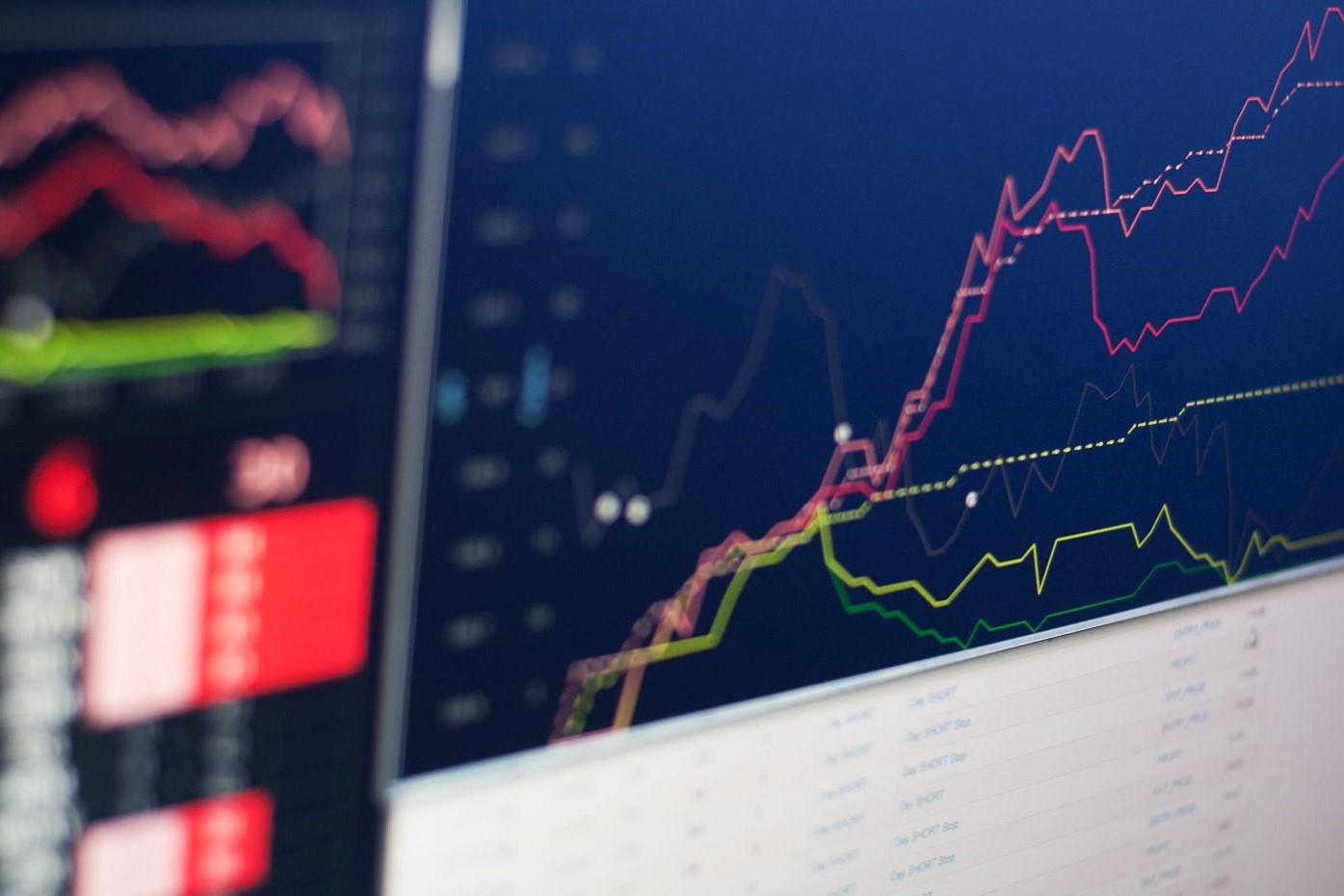What Is Backtesting?
Backtesting is a crucial component of machine learning that involves testing and evaluating the performance of a trading or investment strategy using historical data. It is a simulation technique that allows traders and investors to assess how a given strategy would have performed in the past.
By feeding historical data into the model and applying the strategy, backtesting helps in uncovering the potential profitability and risk associated with the strategy. It provides an objective way to assess the viability of the strategy before deploying it in real-world trading scenarios.
During the backtesting process, the historical data is usually divided into two parts: the training data and the testing data. The training data is used to build and optimize the machine learning model, while the testing data is used to evaluate its performance.
There are various types of backtesting methods that can be employed, depending on the specific objective and requirements. These include single asset backtesting, multi-asset backtesting, event-driven backtesting, and portfolio backtesting.
Backtesting in machine learning plays a vital role in the development and refinement of trading strategies. It helps traders and investors to gain insights into how their strategies would have performed in different market conditions, allowing them to make informed decisions based on historical performance.
Additionally, backtesting enables traders to identify and analyze potential risks and shortcomings of their strategies. By understanding the limitations and weaknesses of a strategy, they can make necessary modifications and improvements to enhance its effectiveness.
The Importance of Backtesting in Machine Learning
Backtesting is a critical step in the machine learning process, especially in the domain of trading and investing. It offers several important benefits that contribute to the success and effectiveness of a machine learning-driven trading strategy.
One of the key advantages of backtesting is the ability to evaluate the performance and profitability of a trading strategy. By analyzing historical data and simulating real-world trading scenarios, backtesting provides a quantitative assessment of how a strategy would have performed in the past. This allows traders and investors to make data-driven decisions and gain confidence in the robustness and viability of their strategies.
Moreover, backtesting helps in identifying potential flaws or weaknesses in a trading strategy. By subjecting the strategy to historical data, traders can uncover areas of improvement and refine their models accordingly. It allows for iterative testing and optimization, leading to the development of more sophisticated and effective trading algorithms.
Another important aspect of backtesting is risk management. By simulating trades and analyzing the performance of a strategy, traders can assess the risks associated with it. This includes evaluating factors such as drawdowns, volatility, and risk-adjusted returns. Understanding the risk profile of a strategy is crucial in designing a well-balanced portfolio and managing risk in a thoughtful and informed manner.
Backtesting also aids in the validation and calibration of machine learning models. By comparing the predicted outcomes with the actual historical data, traders can measure the accuracy and reliability of their models. This validation step is essential to ensure that the machine learning algorithms are correctly capturing the underlying patterns and dynamics of the market.
Furthermore, backtesting provides valuable insights into the behavior of the trading strategy during different market conditions. By analyzing the performance across different time periods and market cycles, traders can gain a deeper understanding of how their strategy adapts and performs in various scenarios. This knowledge can be used to refine and adjust the strategy to better align with changing market dynamics.
Types of Backtesting Strategies
There are several types of backtesting strategies that traders and investors can employ, each with its own unique characteristics and suitability for different trading scenarios:
1. Single Asset Backtesting: This strategy focuses on testing a trading algorithm on a single asset, such as a specific stock or currency pair. It allows traders to evaluate the performance of their strategy on a specific market and analyze its profitability and risk metrics.
2. Multi-Asset Backtesting: In contrast to single asset backtesting, multi-asset backtesting involves testing a strategy across a portfolio of assets. This strategy considers the correlation between different assets and aims to develop a diversified portfolio. It helps traders in assessing the performance of their strategy in a broader market context.
3. Event-Driven Backtesting: Event-driven backtesting focuses on simulating trades based on specific events or triggers. It involves identifying key events, such as earnings announcements or economic reports, and analyzing their impact on the performance of a trading strategy. This strategy is particularly useful for traders who incorporate news and event-driven factors into their decision-making process.
4. Portfolio Backtesting: Portfolio backtesting involves testing a strategy across multiple assets within a portfolio context. It aims to evaluate how the strategy performs as a whole, considering the interaction and allocation of capital across different positions. Portfolio backtesting is essential for investors who want to assess the overall risk and returns of their investment strategy.
5. Walk-Forward Backtesting: Walk-forward backtesting is a dynamic approach that involves periodically updating and re-optimizing a trading strategy as new data becomes available. It is particularly useful for traders who want to adapt their strategies to changing market conditions and ensure the relevance of their models over time.
Each type of backtesting strategy has its strengths and limitations, and the choice of strategy depends on the specific goals and requirements of the trader or investor. It is important to select the most appropriate strategy that aligns with the trading objectives and provides meaningful insights into the performance and behavior of the trading algorithm.
Backtesting Metrics and Evaluation
Backtesting metrics and evaluation are essential components of assessing the performance and effectiveness of a trading strategy. These metrics provide quantitative measurements that help traders and investors make informed decisions and refine their strategies. Here are some key metrics used in backtesting:
1. Profitability Metrics: These metrics measure the profitability of a trading strategy. Common profitability metrics include the total return, which represents the percentage profit or loss generated by the strategy, and the Sharpe ratio, which measures the risk-adjusted return by considering the strategy’s volatility.
2. Risk Metrics: Risk metrics are crucial in analyzing the risk exposure of a trading strategy. Key risk metrics include the maximum drawdown, which measures the largest peak-to-trough decline in the strategy’s equity curve, and the volatility, which quantifies the degree of price fluctuation.
3. Risk-Adjusted Performance: Risk-adjusted performance metrics help traders compare different strategies by considering the level of risk assumed. The most commonly used risk-adjusted performance metric is the Sharpe ratio, which evaluates the excess return earned per unit of risk taken.
4. Win Rate and Profit Factor: The win rate represents the percentage of profitable trades out of total trades executed. The profit factor measures the ratio of the total profit generated by profitable trades to the total loss incurred by losing trades. These metrics help assess the consistency and efficiency of a trading strategy.
5. Drawdown Analysis: Drawdown analysis evaluates the potential downside risk of a strategy. It measures the cumulative decline from a strategy’s peak to its subsequent low point. Traders analyze the magnitude and duration of drawdowns to assess the strategy’s resilience during adverse market conditions.
6. Benchmark Comparison: Comparing the performance of a trading strategy to a benchmark index or industry standard can provide valuable insights. Metrics such as excess return, tracking error, and information ratio are used to evaluate how well the strategy outperforms or aligns with the benchmark.
It is important to note that backtesting metrics are not standalone indicators of a strategy’s success. They should be used in conjunction with qualitative analysis and consideration of market dynamics. Additionally, traders and investors should be aware of the limitations and potential biases associated with backtesting, as historical performance may not always reflect future results.
By regularly evaluating and analyzing these backtesting metrics, traders and investors can gain a better understanding of the strengths and weaknesses of their strategies, make informed decisions, and continuously improve their trading approach.
Challenges and Limitations of Backtesting
While backtesting is a powerful tool for evaluating trading strategies, it is important to recognize and address the challenges and limitations associated with this technique. Understanding these limitations can help traders and investors make more informed decisions and avoid potential pitfalls. Here are some key challenges and limitations of backtesting:
1. Data Quality and Bias: Backtesting heavily relies on historical data to simulate trades and evaluate strategy performance. However, the quality, accuracy, and completeness of the data can vary. Inaccurate or incomplete data can lead to biased results and unrealistic performance assessments. Traders should thoroughly validate and clean their data before conducting backtests.
2. Overfitting and Curve Fitting: Overfitting occurs when a trading strategy is overly optimized to fit historical data. This can result in strategies that perform well in backtests but fail to perform in real-world scenarios. Traders should be cautious of over-optimization and strive for a good balance between performance on historical data and the ability to adapt to future market conditions.
3. Survivorship Bias: Survivorship bias occurs when only successful assets or strategies are considered in the backtesting process, leading to an overestimation of performance. Excluding failed or delisted assets can create a distorted view of the strategy’s potential returns. Traders should account for survivorship bias by including a broader range of assets or using survivorship-bias-free data sources.
4. Transaction Costs and Slippage: Backtesting often does not consider transaction costs, such as brokerage fees and slippage. These costs can significantly impact the performance of a strategy in a real-world trading environment. Ignoring transaction costs can lead to optimistic backtesting results that may not be achievable in practice. Traders should incorporate realistic transaction costs into their backtesting to obtain a more accurate assessment of strategy performance.
5. Market Dynamics and Changing Conditions: Backtesting assumes that past market behavior will repeat in the future. However, market dynamics can change, and historical patterns may not hold true indefinitely. Traders should be aware of the dynamic nature of markets and regularly reassess and update their strategies to adapt to changing conditions.
6. Psychological Factors: Backtesting focuses on quantitative analysis and historical data, but it does not account for the impact of human psychology and emotions on trading decisions. Traders may behave differently in real-time trading scenarios compared to the simulated environment of backtesting. It is important to consider the psychological aspect and exercise discipline and consistency when implementing a strategy.
Despite these challenges and limitations, backtesting remains a valuable tool for traders and investors. By being aware of these limitations and incorporating best practices, traders can leverage backtesting effectively, gain insights into strategy performance, and make informed decisions when implementing their trading strategies.
Best Practices for Backtesting in Machine Learning
Backtesting is a critical part of the machine learning process in trading and investing. To ensure accurate and reliable results, it is important to follow best practices when conducting backtesting. Here are some key best practices to consider:
1. Use Quality and Clean Data: Start with high-quality and clean historical data to ensure accurate and unbiased backtesting results. Ensure that the data is free from errors, inconsistencies, and survivorship bias. Validate and preprocess the data to remove outliers and address any data quality issues.
2. Define Clear Trading Rules: Clearly define the trading rules and parameters of the strategy being tested. This includes entry and exit conditions, position sizing, stop-loss levels, and profit targets. By clearly defining the rules, you can avoid ambiguity and make backtesting results more consistent and replicable.
3. Consider Transaction Costs: Incorporate realistic transaction costs, such as brokerage fees, commissions, and slippage, into the backtesting process. By considering these costs, you can obtain a more accurate reflection of the strategy’s performance and align it with real-world trading conditions.
4. Optimize Parameters Carefully: When optimizing the parameters of a trading strategy, such as moving averages or threshold values, exercise caution to avoid overfitting. Perform sensitivity analysis and validate the robustness of the strategy by testing it on out-of-sample data. Look for parameter values that demonstrate consistent performance across different market conditions.
5. Implement Proper Out-of-Sample Testing: Use a separate set of data for out-of-sample testing to verify the strategy’s performance. This ensures that the strategy is not solely optimized for the specific historical data used for backtesting. Out-of-sample testing provides a more realistic assessment of the strategy’s adaptability to future market conditions.
6. Incorporate Realistic Market Assumptions: Consider real-world market assumptions, such as market impact, liquidity constraints, and market order execution delays, into the backtesting process. By incorporating these factors, you can better simulate the actual trading environment and obtain more realistic performance results.
7. Regularly Monitor and Update Strategies: Markets are dynamic and conditions change over time. Regularly monitor and evaluate the performance of your trading strategy, and be prepared to adjust or update it as needed. Continuously improve your algorithms based on new data and market insights.
8. Perform Robustness Testing: Test your strategy using various scenarios, including different market regimes, time periods, and asset classes. Robustness testing helps assess the strategy’s performance under different conditions and verifies its ability to withstand market fluctuations and uncertainties.
By adhering to these best practices, traders and investors can conduct more reliable and meaningful backtesting. This enables them to make informed decisions and optimize their machine learning-driven trading strategies for better performance in real-world trading scenarios.
Case Study: Backtesting a Trading Strategy
To illustrate the practical application of backtesting in machine learning, let’s consider a case study of backtesting a trading strategy in the foreign exchange (Forex) market.
Suppose we have developed a machine learning algorithm that predicts short-term price movements in a specific currency pair. The goal is to test the performance of this strategy using historical Forex data.
First, we acquire high-quality historical data for the currency pair, including price and volume information. We then divide the data into a training period and a testing period. The training period is used to train the machine learning model, while the testing period is used to evaluate the performance of the strategy.
Next, we implement the trading algorithm by specifying entry and exit rules based on the predictions generated by the machine learning model. For example, the algorithm may generate a “buy” signal when the predicted price increase exceeds a certain threshold and a “sell” signal when the predicted price decrease exceeds another threshold.
We then simulate trades based on the generated signals throughout the testing period. For each trade, we consider transaction costs, such as spread and slippage, to obtain a more accurate representation of the strategy’s performance.
After simulating the trades, we calculate various performance metrics to evaluate the strategy’s effectiveness. These metrics may include total return, Sharpe ratio, maximum drawdown, win rate, and profit factor.
We also compare the performance of the strategy to a benchmark index, such as a buy-and-hold strategy or a passive index fund. This comparison helps determine whether the algorithm outperforms or underperforms the benchmark.
Furthermore, we conduct sensitivity analysis by adjusting the parameters of the strategy, such as stop-loss levels or position sizing, to assess their impact on performance. This step helps identify the optimal parameter values for maximizing returns and managing risk.
Throughout the backtesting process, it is essential to perform robustness testing by testing the strategy on different market conditions and time periods. This analysis ensures that the strategy performs consistently and adapts to various scenarios.
By backtesting the trading strategy, we gain valuable insights into its performance, profitability, and risk metrics. We can assess its suitability for real-world trading, identify areas for improvement, and make data-driven decisions regarding its implementation.
It is important to note that backtesting is just one component of a comprehensive trading strategy development process. Real-world trading involves additional considerations, including market liquidity, economic factors, and unforeseen events. Therefore, while backtesting provides a valuable starting point, it should be complemented with ongoing monitoring, adjustment, and adaptation to achieve sustainable trading success.
Tools and Frameworks for Backtesting
Backtesting machine learning strategies requires the use of specialized tools and frameworks that facilitate the process and provide efficient analysis and evaluation. Here are some commonly used tools and frameworks for backtesting:
1. Python Libraries: Python is a popular programming language for backtesting due to its extensive ecosystem of libraries. Libraries such as NumPy, Pandas, and Scikit-learn provide powerful data manipulation, analysis, and machine learning capabilities. Libraries like Backtrader, Zipline, and PyAlgoTrade offer specific functionalities for backtesting trading strategies.
2. MATLAB: MATLAB is a widely used tool for quantitative finance and backtesting. Its extensive set of built-in functions and toolboxes provide comprehensive tools for data analysis, modeling, and developing trading strategies. MATLAB also allows for seamless integration with other programming languages like Python.
3. R Language: R is another popular language for backtesting, particularly among quantitative analysts and researchers. R provides a wealth of packages, such as quantmod and PerformanceAnalytics, that enable data analysis, visualization, and strategy testing. R’s statistical capabilities make it well-suited for rigorous statistical analysis of backtesting results.
4. Trading Platforms: Many trading platforms offer built-in backtesting capabilities that allow traders to test their algorithms directly within the platform environment. These platforms provide convenient access to historical data, real-time market data, and interactive charting tools. Examples include MetaTrader, TradeStation, and Interactive Brokers’ Trader Workstation.
5. Custom-built Systems: Some traders and researchers choose to develop their own custom-built backtesting systems. These systems can be tailored to specific trading strategies and incorporate proprietary algorithms and data sources. Custom systems offer flexibility and control but require substantial programming and data management skills.
6. Cloud-based Backtesting Services: Cloud-based backtesting services, such as QuantConnect and Quantopian, provide web-based platforms that facilitate the development and backtesting of trading strategies. These services offer pre-built infrastructure, data, and libraries, eliminating the need for local setup and maintenance. They also facilitate collaboration and provide access to community-driven content and strategies.
When selecting a backtesting tool or framework, it is important to consider factors such as ease of use, flexibility, scalability, and availability of data sources. It is also crucial to ensure that the chosen tool aligns with the requirements and objectives of the specific trading strategy being tested.
Whichever tool or framework is chosen, it is essential to conduct thorough testing and validation to ensure accurate and reliable backtesting results. Backtesting should be an iterative process, with continuous refinement and improvement based on the insights gained from the analysis.
Backtesting vs. Forward Testing
Backtesting and forward testing are two distinct approaches used to assess the performance and viability of trading strategies. While both techniques aim to evaluate strategy effectiveness, they differ in terms of the data used and the timing of the evaluation.
Backtesting involves simulating trades using historical market data to evaluate strategy performance. Traders use past data to assess how a strategy would have performed in different market conditions. Backtesting provides valuable insights into the strategy’s historical profitability, risk metrics, and overall performance. It helps traders refine and optimize their strategies based on past data before deploying them in real-world trading scenarios.
On the other hand, forward testing, also known as paper trading or live trading simulation, involves executing trades using real-time or near real-time market data. Traders apply the strategy in a simulated or controlled environment to assess its performance in real-world conditions. Forward testing provides an opportunity to validate the strategy’s effectiveness and adaptability to current market dynamics without risking actual capital.
While backtesting and forward testing serve similar purposes, there are important considerations to keep in mind:
Data Accuracy: Backtesting relies on historical data, and the accuracy, completeness, and quality of the data can impact the reliability of the results. Forward testing, on the other hand, uses real-time or near real-time data, providing a more accurate representation of current market conditions.
Market Dynamics: Backtesting assumes that historical market dynamics will repeat in the future. However, markets are dynamic, and conditions can change. Forward testing allows traders to assess how the strategy performs in the current market environment, capturing any shifts or deviations from historical patterns.
Real-time Execution: Backtesting allows traders to evaluate the strategy’s performance without the pressure of real-time decision-making. Forward testing, however, involves real-time execution, requiring traders to consider factors such as order execution, slippage, and market impact. It provides insights into the challenges of implementing the strategy in a live trading environment.
Psychological Factors: Backtesting doesn’t account for the psychological aspects of trading, such as emotions and decision-making under pressure. Forward testing introduces the psychological element, helping traders understand how emotions can impact their ability to execute the strategy effectively.
Both backtesting and forward testing are valuable tools for traders and investors. Backtesting provides a historical perspective and enables strategy refinement, while forward testing offers real-time evaluation and validation. A comprehensive approach often involves using both techniques to gain a thorough understanding of strategy performance and adaptability.




